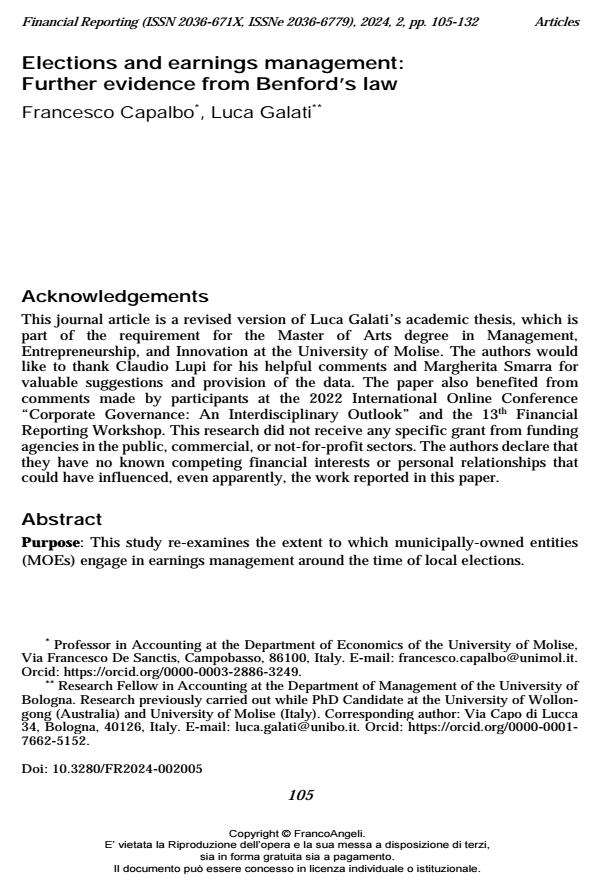Elections and earnings management: Further evidence from Benford’s law
Journal title FINANCIAL REPORTING
Author/s Francesco Capalbo, Luca Galati
Publishing Year 2024 Issue 2024/2
Language English Pages 28 P. 105-132 File size 252 KB
DOI 10.3280/FR2024-002005
DOI is like a bar code for intellectual property: to have more infomation
click here
Below, you can see the article first page
If you want to buy this article in PDF format, you can do it, following the instructions to buy download credits

FrancoAngeli is member of Publishers International Linking Association, Inc (PILA), a not-for-profit association which run the CrossRef service enabling links to and from online scholarly content.
This study re-examines the extent to which municipally-owned entities (MOEs) en-gage in earnings management around the time of local elections. Design/methodology/approach: The study analyses the total revenue figures for 506 unlisted Italian MOEs from 2009 to 2014 using Benford’s law to detect signs of low data quality or manipulated numbers in financial statements. Findings: The findings reveal that entities owned by local governments engage in earnings management practices during pre-electoral seasons, which is consistent with the political cost hypothesis. Accounting numbers are rounded to the closest key cognitive reference point by overusing and underusing specific revenue digits. This aligns with the performance expectations hypothesis as well. Originality/value: This study adds evidence to the existing issue of earnings management in the public sector during elections by using a less conventional ap-proach, highlighting the need for increased transparency in financial reporting be-fore these critical periods. Practical implications: Auditors, forensic accountants, and judicial bodies that endeavour to protect public finances can also employ Benford’s law to scrutinise the financial statements of hybrid entities at such times.
Keywords: Benford’s law, cosmetic earnings management, forensic accounting, local elections, municipally-owned entities, public sector accounting
Jel codes: C12, D72, M41
Francesco Capalbo, Luca Galati, Elections and earnings management: Further evidence from Benford’s law in "FINANCIAL REPORTING" 2/2024, pp 105-132, DOI: 10.3280/FR2024-002005